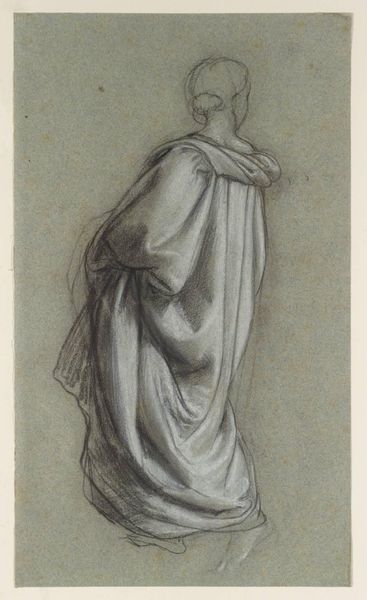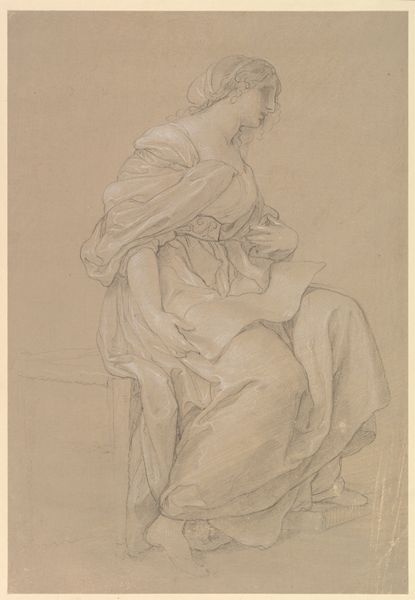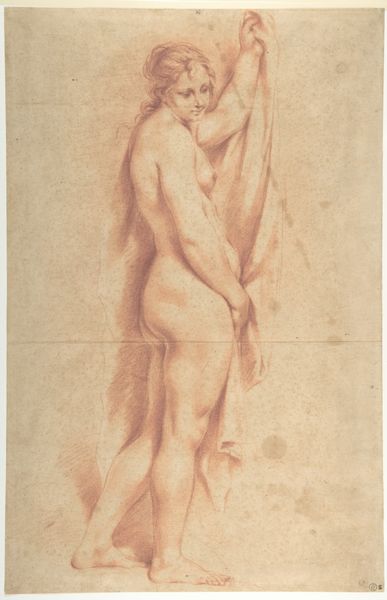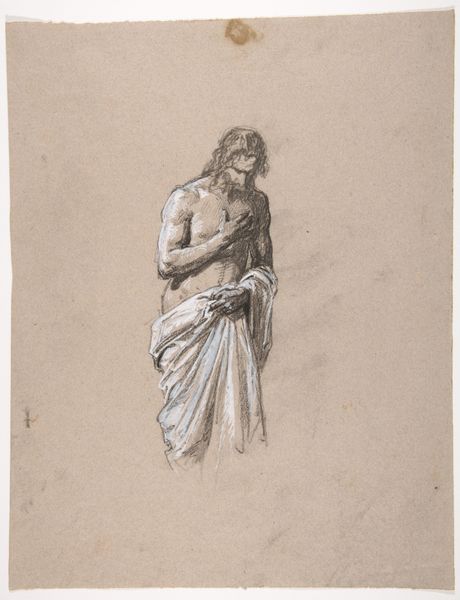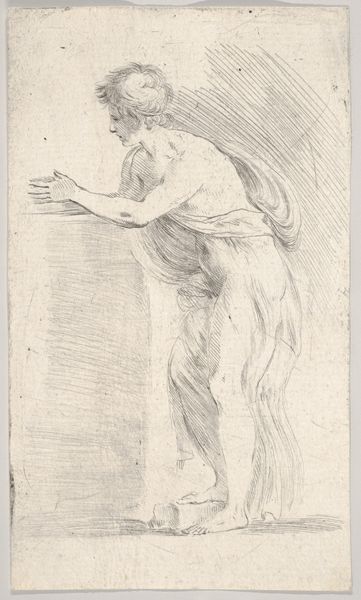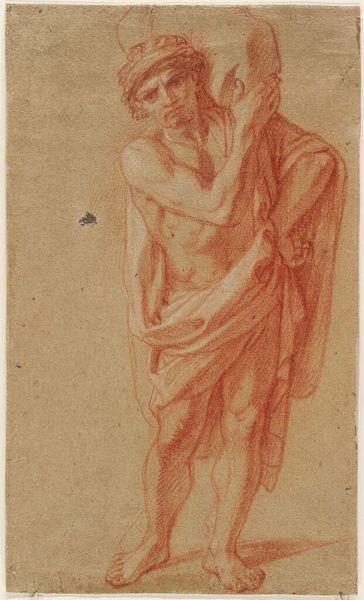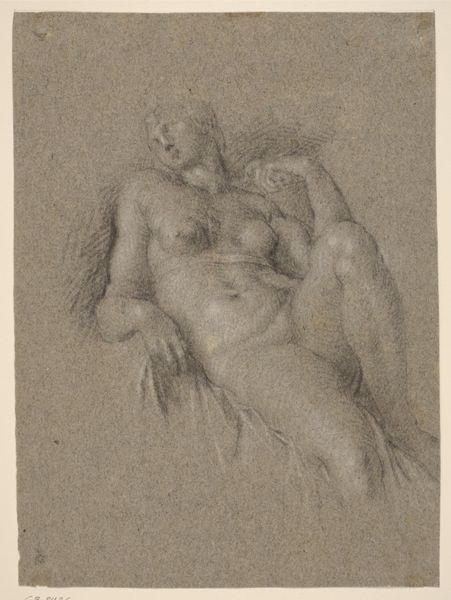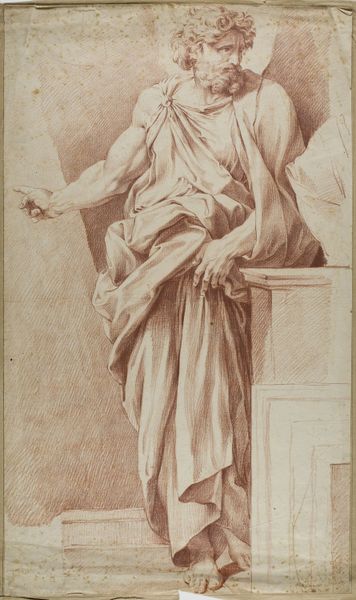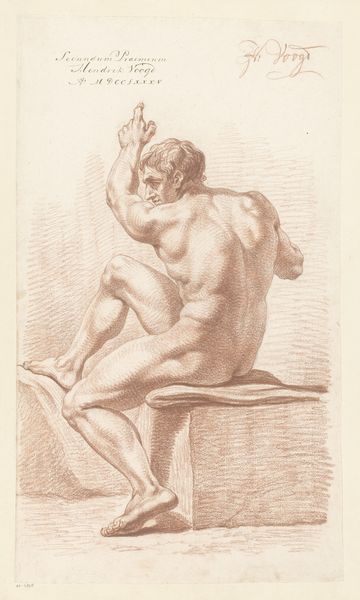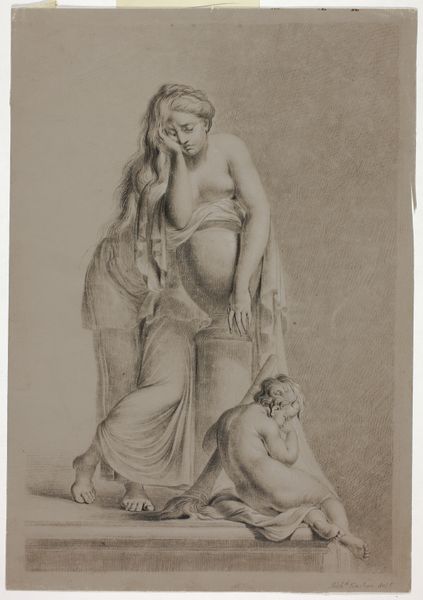
Study for Clovis (middle register; study for wall paintings in the Chapel of Saint Remi, Sainte-Clotilde, Paris, 1858) 1820 - 1875
0:00
0:00
drawing, dry-media, charcoal
#
portrait
#
pencil drawn
#
drawing
#
charcoal drawing
#
dry-media
#
pencil drawing
#
romanticism
#
portrait drawing
#
charcoal
#
history-painting
#
academic-art
Dimensions: 15 1/16 x 9 1/8 in. (38.4 x 23.1 cm)
Copyright: Public Domain
Editor: Here we have Isidore Pils’ “Study for Clovis,” made sometime between 1820 and 1875. It’s a charcoal and pencil drawing. The draped figure, rendered in shades of grey, looks intensely solemn. What's your take on it? Curator: Well, focusing on the materials themselves, notice how the charcoal and pencil—relatively inexpensive and readily available—were used in the service of creating something meant to adorn a chapel. This immediately raises questions about accessibility, class, and the means by which even religious institutions relied on the labor and material resources of everyday society. Editor: So, you're thinking about the kind of access people would have had to these materials? Curator: Precisely. The availability of charcoal and pencil allowed for a broader participation in art making, but here it's harnessed for a project commissioned by the Church. Also, the 'Study' aspect highlights the production process, stripping away some of the mystique surrounding "high art." Were these studies done by Pils himself, or were there assistants involved in the labor of preparation? Editor: That makes me think about how much preparation goes into creating larger pieces. The labor behind even seemingly effortless art. Curator: Exactly. And who benefits from that labor? Whose stories are told, and whose are left out of the narrative of production and consumption surrounding the art? Consider the availability of art education. Who had access to learn the skill to draw and make these studies? This drawing might present the viewer with an idealized image, but a Materialist lens compels us to examine the often-unequal social conditions underlying its creation. Editor: That definitely gives me a different way of looking at this. It is not just about what the artist created, but *how* they made it and who enabled it. Curator: Precisely! It is essential to keep asking about production. That’s why I value this viewpoint; it makes sure that even art made for the church makes us reflect on secular values of labour and materials.
Comments
No comments
Be the first to comment and join the conversation on the ultimate creative platform.
